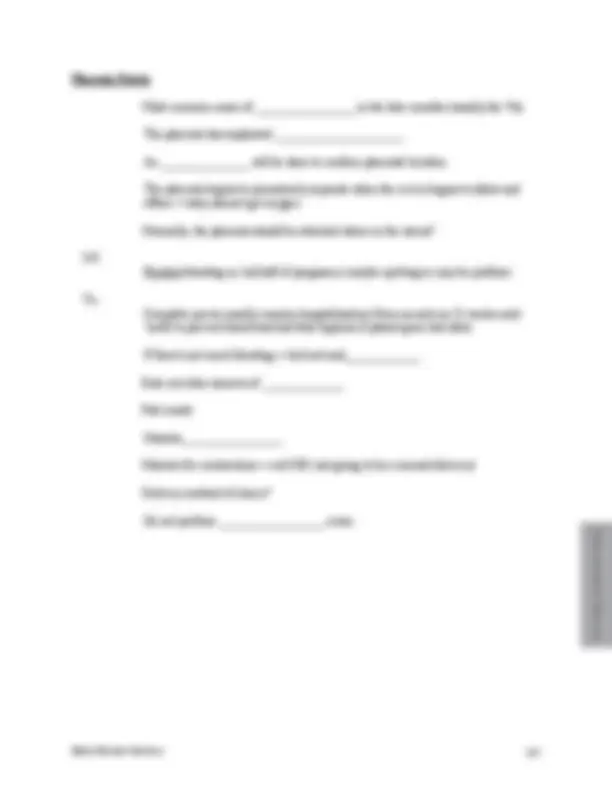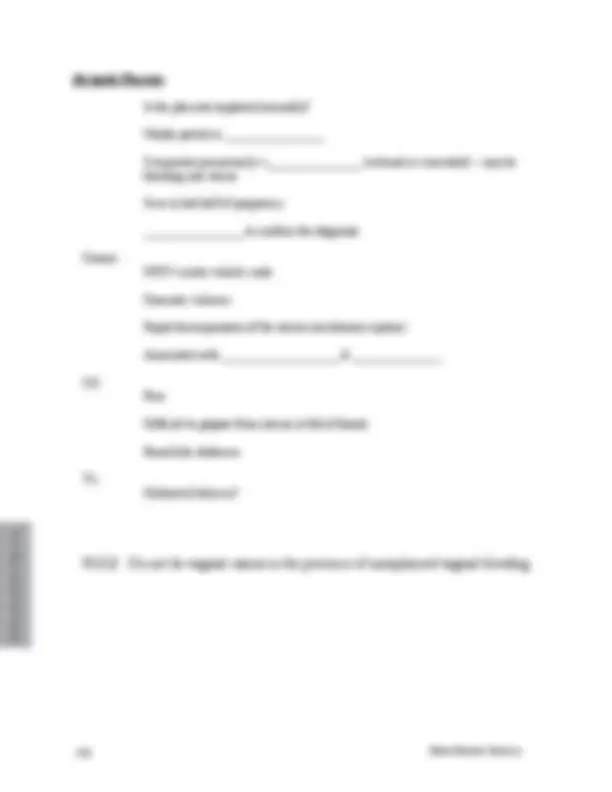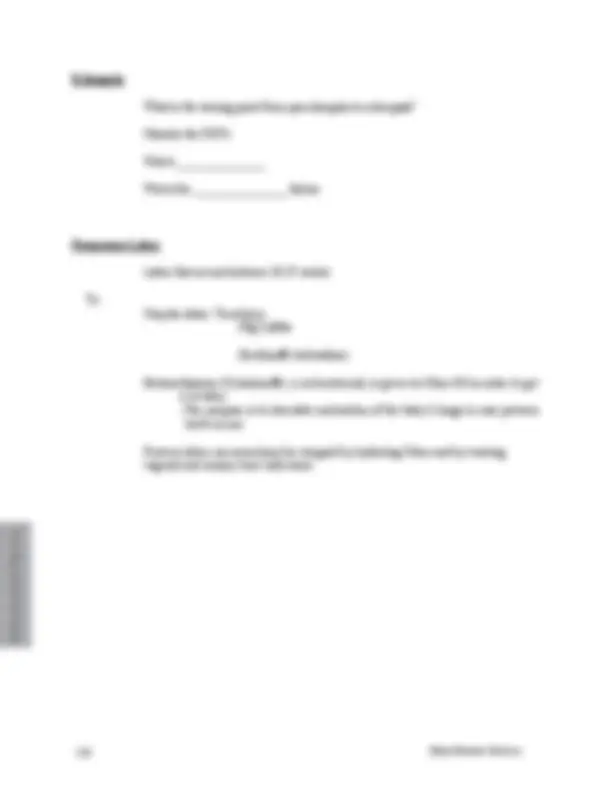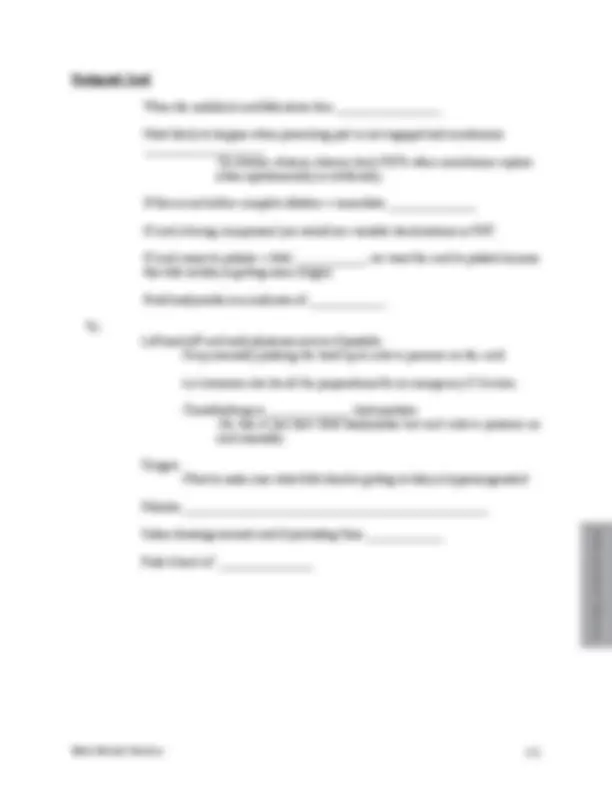








Study with the several resources on Docsity

Earn points by helping other students or get them with a premium plan


Prepare for your exams
Study with the several resources on Docsity

Earn points to download
Earn points by helping other students or get them with a premium plan
Community
Ask the community for help and clear up your study doubts
Discover the best universities in your country according to Docsity users
Free resources
Download our free guides on studying techniques, anxiety management strategies, and thesis advice from Docsity tutors
A comprehensive overview of various complications that can arise during pregnancy, including miscarriage, hydatidiform mole, ectopic pregnancy, placenta previa, abruptio placenta, incompetent cervix, hyperemesis gravidarum, preeclampsia, eclampsia, premature labor, and prolapsed cord. It covers the symptoms, causes, and treatments for each condition, as well as important considerations for healthcare providers. The document also discusses the significance of group b streptococcus (gbs) infection and the importance of antibiotic prophylaxis. This information is crucial for healthcare professionals, particularly nurses and midwives, to provide effective and informed care for pregnant women and their unborn babies.
Typology: Exercises
1 / 10

This page cannot be seen from the preview
Don't miss anything!







Miscarriage
-Also called spontaneous ________________
-Spotting common during pregnancy but the combination of bleeding and ___________ is more indicative of a miscarriage
S/S: ________________, cramping, backache
Measure hCG levels - we worry when levels _____________
Tx: -Bed rest, Abstinence from sex, Sedation
-If miscarriage imminent→ IV, Blood, D & C (dilatation & curettage)
Hydatidiform mole (molar pregnancy)
-Benign neoplasm, can turn malignant
-Grape-like clusters of vesicles
-May/may not have a fetus involved
-How does this start?
S/S: -Uterus enlarges too________
-Absence of FHT's
-Bleeding (sometimes will have vesicles)
-Confirmed with _________________ Tx: -Small mole→ D & C (have to empty the uterus)
-Do not get __________________; follow-up very important
-If it becomes malignant it is called choriocarcinoma.
-Will do____________________________to determine metastasis
-Will measure hCG's ____________ until normal; rechecked q 2-4 weeks; then every 1-2 months for 6 months to a year.
Complications of Maternity
Ectopic Pregnancy
-This is a gestation outside the ___________.
-Where does it usually occur?
-Confirmed with an__________________
-First sign?
S/S: -Patient will exhibit the the usual S/S of ________________.... Then pain -spotting or may be bleeding into the peritoneum
-If a patient has had l ectopic pregnancy she is at risk for another.
Tx: -Rheumatrex® /Trexall® (methotrexate) is given to Mom to stop the growth of the embryo to save the tube.
-If the Rheumatrex® /Trexall® (methotrexate) does not work, a laparoscopy may be done, a small incision will be made into the tube and the embryo will be removed. -The entire tube may have to be removed.
-A laparotomy is done if the tube has ruptured or if ectopic pregnancy is advanced -If the tube does rupture your patient could hemorrhage and may need a blood transfusion
Complications of Maternity
Abruptio Placenta
Is the placenta implanted normally?
Maybe partial or _________________
It separates prematurely→________________ (external or concealed) – may be bleeding into uterus
Seen in last half of pregnancy
_________________ to confirm the diagnosis
Causes: MVC= motor vehicle crash
Domestic violence
Rapid decompression of the uterus (membranes rupture)
Associated with ____________________ & _______________
S/S: Pain
Difficult to palpate fetus (uterus is full of blood)
Board-like abdomen
Tx: Method of delivery?
Complications of Maternity
Incompetent Cervix
This is when the cervix _________________ prematurely.
Occurs in the ______________ month
This pt. will have a history of repeated, painless,__________ trimester miscarriages.
Tx: Purse-String suture (cerclage) at l4-l8 weeks - reinforces the cervix
May have a _______________to preserve the suture
80-90% chance of carrying the baby to term
Complications of Maternity
Preeclampsia
Increased BP, proteinuria, edema after ___________ week
If Mom’s pre-pregnant baseline BP is not known then ___________ is considered to be mild preeclampsia
S/S: Sudden ______________ gain
Face and hands swollen
Headache, _______________ vision
Hyper-reflexia (increased DTR’s)
Clonus
When you see a patient that gains 2 or more pounds in a week watch closely. Tx: Mild: bed rest as much as possible, increase protein
Severe: -Sedation to delay ______________________ -Valium® (diazepam) is not the drug of choice here
Magnesium Sulfate: sedates, anticonvulsant, vasodilates
-These include: BP, respirations, DTRs, & LOC. Urine output is monitored hourly & serum magnesium is checked periodically.
-If Magnesium Sulfate is used labor will stop unless augmented with Pitocin® (oxytocin)
If diastolic > l00→ Hydralazine ® (apresoline)
Only cure?
After delivery, how long is the patient at risk for seizures?
Single room
Very quiet environment
Dim the lights
Complications of Maternity
Eclampsia
What is the turning point from preeclampsia to eclampsia?
Monitor the FHT's
Watch _______________
Watch for ________________ failure
Premature Labor
Labor that occurs between 20-37 weeks
Tx: Stop the labor: Tocolytics: -Mg Sulfate
-Brethine® (terbutaline)
Betamethasone (Celestone®), a corticosteroid, is given to Mom IM in order to get it to baby. -The purpose is to stimulate maturation of the baby’s lungs in case preterm birth occurs.
Preterm labor can sometimes be stopped by hydrating Mom and by treating vaginal and urinary tract infections.
Complications of Maternity
Group B Streptococcus (GBS)
Leading cause of neonatal morbidity
Routinely assess for GBS risk factors during pregnancy and on admission to L&D
Transmitted to infant from birth canal of the infected mother during delivery
All pregnant women should be cultured between 35-37 weeks of gestation
Risk factors for neonatal GBS: preterm birth less than 37 weeks, + prenatal cultures in current pregnancy, premature rupture of membranes (longer than 18hr), positive history for early- onset neonatal GBS, intrapartum maternal fever higher than 100.4º F, previous infant with GBS
Test or culture Positive? Antibiotic prophylaxis offered (IV)
If they do not have a culture when the mother goes into labor or if the mother has a risk factor then an antibiotic prophylaxis is offered (IV)
Treatment:
Drug of Choice? PCN
Complications of Maternity